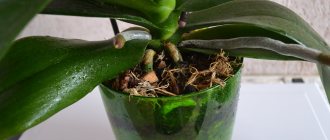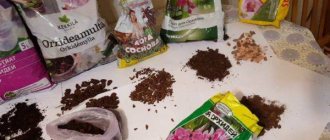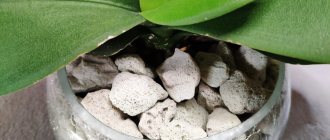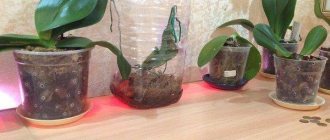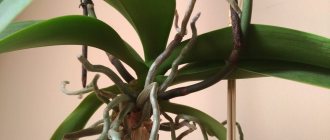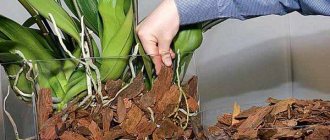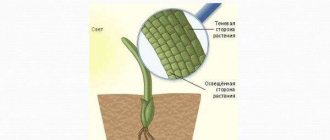Domestic representatives of the orchid family are quite capricious and picky about their care. The same persistent phalaenopsis is demanding not only on the microclimate, but also on the composition of the substrate. Significant changes in the latter can lead the flower to serious stress, and at the same time to its death.
Specialized soil and accompanying chemicals for orchids can cost serious financial expenses. But many professionals use activated carbon when growing flowers. The product is sold in any pharmacy, costs a penny and boasts its versatility. Let's find out in what scenarios activated carbon is used and how to use it correctly.
Substrate
Soil can be purchased at any flower shop. The substrate mixture is adjusted depending on the specific subspecies of orchid. But such decisions cost money, and if more than one flower is paid, then serious financial investments will be required.
Substrate is different from substrate. Not all manufacturers mix soil with proper quality. Sometimes you can run into downright bad decisions. Therefore, experienced flower growers advise to be more careful when choosing a manufacturer, or to prepare the substrate yourself.
Universal soil for orchids include:
- Pine bark.
- Peat moss.
- Root shoots of fern.
- Wood ash.
As a rule, there are no problems with bark, moss and ferns. You can find them in almost any forest belt or park area. It is better to use time-tested sphagnum moss as peat moss. But many people experience serious difficulties in finding wood ash, especially city residents.
Some novice gardeners plant a plant without it. But here you need to understand that wood ash plays almost a key role in the development of an orchid. The fact is that this component provides the necessary aeration, that is, it organizes the saturation of greenery with oxygen. If the process is disrupted or is completely absent, then the above-ground part of the flower will, at best, be sluggish, and at worst, dry out completely.
Experienced flower growers, in the absence of wood ash, advise using activated carbon. Some experts even recommend including it in the substrate in any case, pointing out the clear advantages of this approach.
In addition to organizing optimal aeration, activated carbon removes excess water, which has a beneficial effect on the quality of growth of the root system. In this case, it is less susceptible to fungal pathogens and rotting in general. As activated carbon dries, it nourishes the roots with moisture, which reduces the amount of watering.
When buying a young orchid, you should take into account that the store-bought substrate mostly consists of peat moss. As it grows, it will choke the roots of the plant, so the flower must be replanted.
Soil for replanting
The soil for replanting phalaenopsis consists mainly of crushed tree (pine) bark with the addition of charcoal and sphagnum moss.
This composition is easy to prepare yourself.
, but if the substrate is purchased in a store, you must choose a package marked “For phalaenopsis.” This is explained by the fact that the soil “For Orchids” contains peat, which, filling the voids inside the container, compacts the substrate, preventing it from drying, which leads to rotting of the roots.
It is also recommended to disinfect the substrate
, pour boiling water over it and leave until it cools completely, or boil for 3-4 minutes. After cooling, the mixture must be washed and dried at room temperature for about a day.
Self-preparation of substrate with activated carbon
Flower shops sell a wide variety of substrate variations, as well as its individual components. But to save money, you can mix the soil yourself. The effort and time spent are more than repaid with a healthy and pleasing orchid.
pine bark
You cannot remove the bark from a green tree. The best option is to find some fallen trunk and carefully scrape off the layers that have already begun to fall away on their own. If you use green bark, there is a risk of the flower becoming infected with pests. Although the latter are found on a dry formation, they are not in such volumes as on a healthy one.
In addition, fresh bark releases a sticky resin that is dangerous for orchids. It’s also not worth rushing to extremes: the rotten layer, as well as the rotten one, is susceptible to rotting, which will immediately affect the root system of the plant.
peat moss
Sphagnum moss can be found in shaded areas of forest belts and park areas. Peat should be collected from late spring until autumn. During this period, the moss is greenish in color and is rich in elements useful for the orchid’s root system.
Sphagnum can be collected for future use, because there will be no problems with storage. Dried peat will easily survive the winter somewhere warm and dark. For long-term storage, it is better to put it in the freezer. In any case, the moss will retain all its beneficial qualities.
Fern
It is not the leaves themselves that need to be collected, but the roots of the plant. The optimal time for harvesting fern is spring. During this period, the greenery has not yet blossomed, but the roots have already gained strength. As a last resort, you can collect the shoots in the fall, when the above-ground part is almost dry.
All products received from the street are subject to thorough sanitary processing. Literally every component can and, as a rule, contains undesirable microelements, as well as pest larvae.
Disinfection
After collecting all the necessary components, you need to disinfect them using industrial or folk remedies. The same flower shops have special antiseptic preparations. But experienced flower growers recommend adopting the classic method of disinfection without the use of aggressive chemicals.
Disinfection of components:
- Place all ingredients in glass or enamel containers.
- Pour boiled water into the container and place it in a shaded place without a draft.
- We wait 2-3 hours, after which we remove the components.
As a result of such thermal effects, not only debris, but also pests will float to the surface. Moreover, boiling water will destroy unwanted trace elements. After processing, the components must be thoroughly dried.
Activated carbon is added at the last stage. Otherwise, during disinfection, boiling water will destroy all its beneficial qualities.
Substrate mixing
The main volume of soil for most orchid species is the bark. Its share in the pot should be at least 50%. The remaining ingredients for the substrate are distributed in equal shares - 1/6 of the total mass. That is, the volume of activated carbon is 16-17%.
The latter must be laid evenly, adding it as other layers are filled. If coal is concentrated in one place, then it will be of little use. Some gardeners, when mixing soil, moisten it with each layer. This cannot be done with activated carbon. Watering is carried out after the substrate is completely formed.
Category: “Questions and answers”
Question No. 1. My orchid has rotted roots. I decided to transplant her. Before this, I cut off the roots, treated them with activated carbon and placed them in a greenhouse. After some time, I noticed that the roots began to rot further. I cut them again. But this time nothing helped either. In the end, the orchid had to be thrown away. Now I doubt that coal is as good for resuscitation as it is praised. Otherwise, why didn't he help?
Answer.
In all likelihood, this situation is not just about coal. Often gardeners feel sorry for the plant by not cutting off the damaged part strongly enough. The leaf or root must be removed to the living tissue 1 cm above the lesion, otherwise the infection will persist in the tissues and spread further. In addition, when treating sections with activated carbon, it is important to remember that this is not a medicine, but a protective agent that forms a covering layer. To maximize the effect, it is better to crush the tablets as finely as possible, to the point of dust.
Remember that no coal will save you if, during further rehabilitation, the orchid finds itself in conditions of excessive humidity. The remaining pathogens will develop at tremendous speed and quickly attack the weakened plant.
Question No. 2. Is it possible to cure an orchid from root rot using activated carbon?
Answer.
There is no cure, but it is possible to prevent the disease from spreading to healthy organs. Especially if the disease is in its early stages. To do this, the rotten roots of the orchid are cut off, sprinkled with charcoal powder and transplanted into a fresh, disinfected substrate.
Orchid propagation
Most orchids that have pseudobulbs reproduce well by division. This is the easiest method for beginners and does not require any specific skills or knowledge. However, the success of the procedure depends on the fulfillment of certain conditions.
If the flower has already outgrown its pot, then it is divided and one part is transferred to a new place of residence. At the same time, it is important to follow a number of recommendations, otherwise the plant will not take root or will even die from the dominance of parasites and harmful microorganisms.
Orchid propagation:
- Moisten the substrate generously with water.
- Carefully remove the flower by tilting the pot horizontally.
- Cut the orchid into two parts, leaving at least three pseudobulbs in each separate section.
- Treat the cut areas with activated carbon, after grinding it into powder.
- Plant the cut pieces in new pots.
Hands must be wearing gardening or medical gloves, and tools must be disinfected. This reduces the risk of flower infection by pathogenic microorganisms. In the absence of alcohol, you can pour boiling water over a knife or scalpel.
Orchid roots are extremely fragile, so you need to work with them very carefully. Places where the shoots are broken also need to be treated with activated carbon. Otherwise, they will begin to rot and eventually the plant will die.
Powdered activated carbon is a good antiseptic. The fact is that after treatment with the product, a protective film is formed at the cut site, preventing the penetration of harmful microorganisms into the flower.
Such disinfection reduces the risk of developing fungal and bacterial infections several times. Moreover, the film remains for a long time, sufficient for the plant to have time to heal its wounds, thereby minimizing the level of external threat.
Transfer
When starting to transplant, drainage must be laid
– expanded clay, polystyrene foam, small pebbles and sprinkle it with substrate.
Carefully, trying not to damage the fragile roots, phalaenopsis is immersed in the pot so that the plant is located in the center
, and the substrate covered the stem and roots at the same level.
Diving Too Deep
orchids into the soil leads to the fact that the lower leaves of the plant in contact with the moist substrate begin to ache and rot, which affects the health and decorative properties of the flower.
To leave or not to leave so-called aerial roots
– it’s up to the owner of the phalaenopsis to decide. The peculiarity of orchids is such that over time, higher up the stem of the flower, new young roots will grow, one way or another, remaining on the surface.
They perform the same role as the “underground” ones, differing from them only in color, which depends on whether the roots are located in a dry or humid environment. Therefore, the position of the roots will not affect the condition of the flower.
. The upper roots can be lightly crushed with a substrate to more securely place the plant in the pot - the phalaenopsis should not wobble after transplantation.
If necessary, you need to install a support for the peduncle.
Still have questions? Then watch the video on replanting a phalaenopsis orchid below:
Treatment of orchids with activated carbon
The plant reacts quite sharply to improper care. Beginning gardeners' orchids often get sick: the color of the fabric changes, mold appears, leaves fade, flower stalks fall off, etc. Any stress immediately affects the well-being of the plant.
Orchids will bloom and please the eye only if they are provided with an optimal microclimate: temperature, air humidity and proper watering.
Causes and consequences of improper care:
- Low room temperature and draft immediately affect the leaves. They begin to turn black, fade and fall off.
- Excessive watering can cause root loss. The shoots rot, undermining the health of the aboveground part of the plant.
- The dry environment takes its toll on the buds. The flower section dries up and sheds its young leaves.
If you ignore the symptoms and do not take appropriate measures in time, the flower can turn into a breeding ground for larvae and harmful bacteria, after which it simply dies. The only panacea for the problems described above is a full orchid transplant. Activated carbon is a key player in resuscitation.
Orchid transplant:
- Wet the soil with water at room temperature.
- Carefully remove the flower from the pot, trying not to damage the root system.
- If necessary, we get rid of old/rotten/dried shoots by cutting them to green tissue.
- We wait until the juice stops oozing from the wound.
- Sprinkle the cut surface with activated carbon (grind it first).
- We plant the flower in a new pot.
Treated areas should be dried naturally. Drafts or the same hair dryer can disrupt the healing procedure. Also, do not dry the plant in direct sunlight. High concentrations of ultraviolet radiation on tissues can cause unpleasant burns. In the warm season, drying will take about 30 minutes, while in winter it will take several hours.
There is no need to skimp on activated carbon. Excess powder will be washed off afterwards. While a lack of antiseptic will negatively affect the protection of problem areas. For greater effect, activated carbon can be ground into powder.
Under no circumstances should you use old soil in another pot, otherwise all the old problems in the form of parasites and infections will become new ones. During the adaptation period, the flower needs to find a secluded corner in a shaded place and not expose it to stress. Also, do not forget about drainage so that the water does not stagnate in the pot.
Transplanting phalaenopsis babies
Sometimes paired leaves appear
, these are the formation of phalaenopsis babies - a new miniature plant with its own roots, leaves and peduncle, which need to be grown a little before being separated.
When the roots of the baby have grown to a length of 3-4 cm, it can be separated from the parent flower by cutting off the peduncle of the mother plant a centimeter from the baby.
After this, the baby is transplanted into a small pot with holes
, using a substrate for phalaenopsis. To ensure a high level of humidity, the young orchid along with the pot can be placed in a plastic bag, remembering to ventilate.
Other beneficial properties of activated carbon
Young and still fragile plants, even with an abundance of fertilizers, are susceptible to dangerous infectious diseases. The root system and part of the above-ground stem take the main blow. To prevent infection, the surface of the substrate is sprinkled with powdered activated carbon: the root and aerial parts will be reliably protected from parasites.
When you need to root a shoot in a container of water, you should add one or two tablets of activated carbon. The product will ensure long-term preservation of water freshness, and the adaptation of the roots will noticeably improve. You can do the same with cut flowers that are given on holidays. It is enough to throw a few tablets of activated carbon into a vase and the bouquet will retain its presentability longer.
Very often, hard water causes the substrate in the pot to sour and become salty. 2-3 tablets immersed to a centimeter depth can activate the soil and restore balance. This problem is especially true for indoor plants that require a neutral pH level.
A method for reviving roots using honey or sugar syrup
There is another method that can help the plant restore its roots. Add 1 tbsp to an aqueous solution (1 liter of liquid). a spoonful of honey or sugar syrup. In addition, for watering the flower it is recommended to use:
- complex fertilizers;
- fertilizing with iron;
- monthly subcortical treatments with a growth regulator.
This option will help you quickly deal with the problem of the root system.
The roots are rotting, which means the plant was not cared for properly. This often happens in autumn or winter, when the orchid lacks sun and warmth. There is no need to throw away the plant, because there is always a chance to save it. It is only important to establish the cause of root rotting.
Minor Components
Minor components are also added to the soil for replanting orchids - these are “scales” from pine cones, soil from under a thick cover of fallen pine needles, and moss. All this is collected in coniferous or mixed forests. All of the listed components must undergo the necessary processing before they enter the substrate:
Orchid in open ground
Pine cones. They are added to the soil along with the bark or to replace it. Cones brought home should be divided into scales and placed in a container with clean, cool water for 15-20 minutes, then dried.
Earth. The soil is collected only in those places where it is covered with fallen spruce or pine needles. At home, the substrate is cleared of excess branches and debris, while the needles themselves can be left behind.
Sphagnum is ideal for soil, as a component that absorbs and retains moisture, and is also used as a natural soil fertilizer. This type of moss can be found in deep holes in the forest. It is necessary to assemble the component extremely carefully, since in thick thickets of moss a person under his own weight can fall to a depth of 15-20 cm.
Fern root. In preparing the mixture for replanting an orchid, only the root is used. Therefore, if you find this plant in the forest, do not bother yourself with moving the long stem and leaves - cut off what is unnecessary with a sharp knife. The root is a unique component that contains almost all the necessary trace elements and nutrients for the normal growth of an orchid.
Everything that is collected in the forest and brought home must undergo sanitary treatment and the necessary preparation before adding it to the substrate.
Charcoal
This component is easy to collect in places frequently visited by tourists and vacationers.
Campfire residue is a great place to collect charcoal.
In addition to adding to the mixture for replanting orchids, it is successfully used for other purposes:
- Drainage for pots and flowerpots.
- Disinfection. When pruning branches or roots of a plant, fresh cuts are dusted with charcoal powder.
- Fertilizer. The coal is crushed to a powder, which is sprinkled on the top layers of the soil.
- Loosening the soil. Large particles of coal are introduced into the soil.
Charcoal has no expiration date, so it can be stored for future use. It must be stored in a dark and dry place.
Basic mistakes
Inexperienced gardeners often make mistakes when choosing a substrate for planting an orchid. To avoid failure when selecting soil, the following nuances must be taken into account:
- ordinary soil is not suitable; loose, airy, light soil is required;
- the soil must be porous so that water does not evaporate into the air, but is absorbed by the roots;
- the substrate must be resistant to decomposition;
- the soil and all its components are disinfected by any available method;
- When selecting components, the requirements of different types of orchids are taken into account.
tree bark
The chemical composition of this component, like no other, is ideal for the growth of many exotic plants, including orchids. You can harvest bark in a pine forest. You can separate the bark from the tree only if it can be removed without effort. In any other cases, you can collect it directly from the ground.
Orchids in tree bark
During the renewal period, the pine forest is literally strewn with rolls of bark. Under no circumstances use the bark found on a rotten tree. Such a component is most likely full of parasites and will not bring any benefit to the flower.
Review
Alla Konstantinovna (Ekaterinburg)
I have been working with orchids for many years. I have 19 of them. And all this time, when transplanting, I always use activated carbon. He has never let me down yet.
An orchid is an epiphytic plant that requires special soil with a certain composition . Therefore, the flower will not live in ordinary dense soils based on peat and other soil mixtures, since its root system will suffocate without air access.
Therefore, the orchid is planted in soil intended only for its cultivation. Below we will tell you in more detail about soils for orchids and additives to them.
